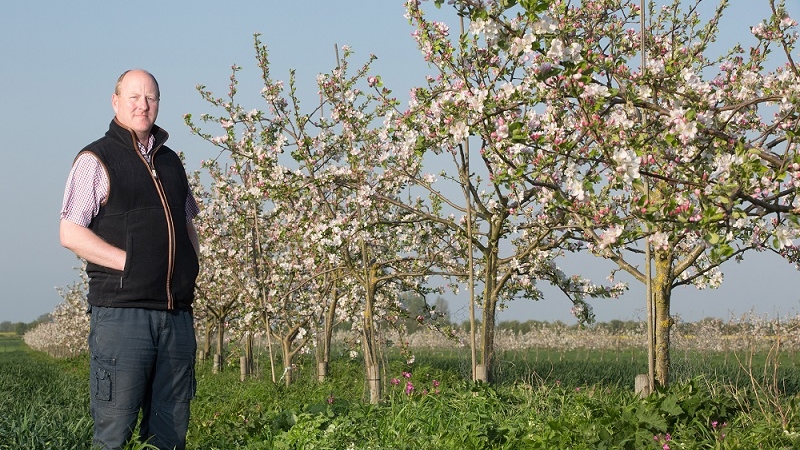Event
FORESTRY OR FARMING? AGROFORESTRY OFFERS A THIRD WAY
FORESTRY OR FARMING? AGROFORESTRY OFFERS A THIRD WAY
Agri-TechE webinar discusses options for livestock, cropping and carbon capture
Extreme weather at harvest can reduce cereal yields by 20%, but for Stephen Briggs’ Cambridgeshire farm, the natural windbreak provided by agroforestry cut the loss by half during the storms of 2019. The benefits for farmers of growing trees within crops are not widely known, according to Dr Belinda Clarke, Director of Agri-TechE.
“Agroforestry offers more than habitats for wildlife,” comments Dr Clarke, ahead of an Agri-TechE online event “Seeing the Wood for the Trees,” on 8th October at 10am. The event sees Briggs, and others, discuss the potential of agroforestry for improving cropping, livestock production and as an alternative source of income.
Briggs grows apple trees in strips across 52 hectares of fen soil on Whitehall Farm. He recounts: “In 2019 we lost about 20% of the grain in the high winds. However, in the fields with agroforestry, the losses were less than 10%. The trees slowed down the wind saving £215/ha worth of output.
“Growing fruit alongside cereals also means I’m doubling productivity across my farm, by effectively growing in three dimensions, throughout the year,” Briggs continues.
“Forestry or farming? To date it has been a binary choice but it doesn’t need to be,” says Jim O’Neill, of the Forestry Commission. “Combining the two can bring new incomes and benefits to the soil.
“It’s important to make the best of poorer areas of land,” O’Neill advises growers in Cumbria as part of his role as Forestry Investment Zone Officer. “Trees can help, especially in the wet compacted soil that we have here in Cumbria. Planting trees increases aeration, water storage and fertility in the soil – all of these effects together can boost the productivity of the grass sward. Trees also provide shelter to animals in heavy weather or hot sun.”
Strategies that offer ‘public goods’ will be rewarded with payments as the UK transitions to ELMS (Environmental Land Management Scheme). Trees offer a carbon store, assisting the industry reach its net zero targets. Advice on carbon storage payment schemes will be given in the webinar by consultant Greg Beeton of Brown & Co.
The availability of trees for large scale tree planting may be a limiting factor, as germination rates are only 30 per cent, but overcoming this through advanced seed treatments is an area where the UK has strong track record.
Philip Ayres of Elsoms Seeds comments that the company is using its expertise in vegetables to improve the germination rate of tree seeds and provide alternatives to chemical seed treatments. He says: “To encourage germination we prime the seeds, through hydration and conditioning to get a more even germination, but also to improve the vigour. In addition, we’ve started tree seed trials with three of our biologicals that were already on the market for vegetables. These microbe packages help boost the ability of the tree to take up fertiliser and stimulate root growth of the plant.”
The Agri-TechE online event, ‘Seeing the Wood for the Trees,’ will occur on October 8th. For more info and to reserve your place, visit agri-tech-e.co.uk/events.
